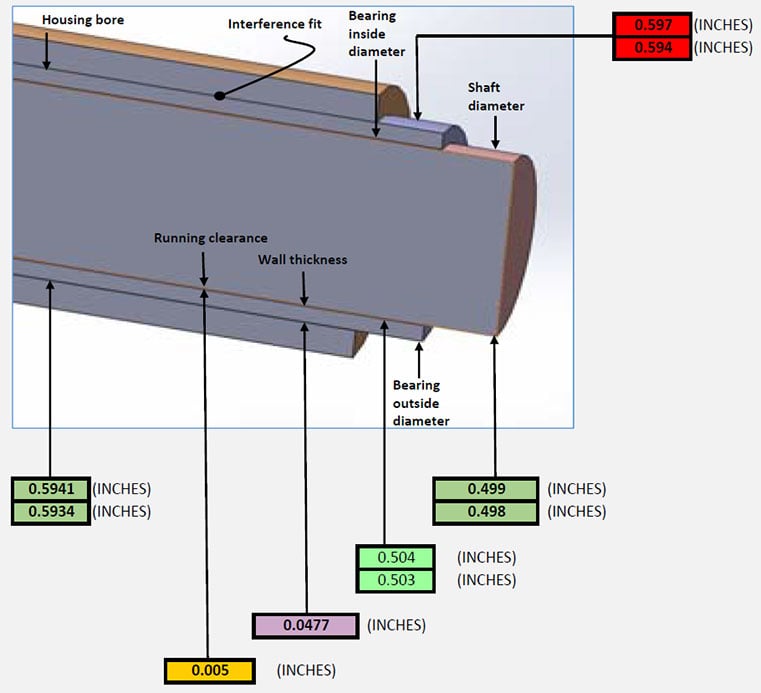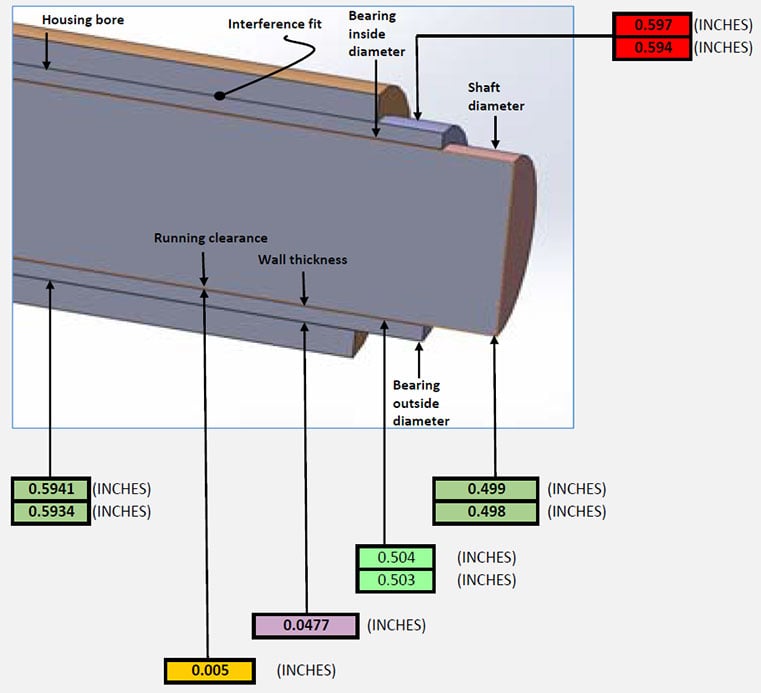
I had a great conversation this week about bearing selection and the intricacies of finding the right press fit. As a quick review, press fit is defined as the value of interference between the shaft and the inside diameter of the bearing, or the housing bore and the outside diameter of the bearing when installed.
Why is press fit important in bearing selection? Check out a recent calculation for our Ultracomp composite material.
In order to generate a proper press fit for our Ultracomp product line, TriStar Plastics requires the housing bore dimension with tolerances, the shaft dimension with tolerances, along with the exposed applications temperature variations. The example below features an example of a press fit utilizing a housing bore of 0.5934/0.5941,” shaft 0.499/0.498 with the temperature varying from 68 deg. F to 200 deg. F.”
To find the right press fit, you must also consider material creep and the vibration that occurs during rotational operation. Without the right fit, bearings can experience stress through extreme friction and heat due to thermal expansion, or they may be exposed to dust or other abrasive particles that are generated. Obtaining secure press fit also allows for torque transfer and for preserving axial location. Read about plastic custom fabrication in our Machining Plastics White Paper.
Key considerations for a good press fit:
- Interference fit: Also known as a press fit or friction fit, is a fastening between two parts which is achieved by friction after the parts are pushed together, rather than by any other means of fastening.
- Thermal expansion: The tendency of matter to change in volume in response to a change in temperature, through heat transfer.
- Running clearance: Is the calculated free space between either the shaft and the inside of the bearing, or the outside of the bearing and the housing. Running clearances can be affected dramatically by thermal cycling and, when combined with frictional heat, can be the difference between success or failure of the bearing.
- Close In: For our Ultracomp products is a percentage of the material that will compress in on itself from the given restrictions on either the outside or inside diameter of the bearing. If close in is not properly calculated it could lead to bearing failure. Close in is determined by the bearing wall thickness, and shaft diameter.
We can do a similar calculation for your application, just fill out a Design Worksheet! Or want to discuss your bearing selection with an Expert? Just Ask!









